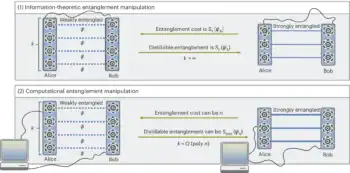
A new technology based on modulating quantum processes inside human cells could revolutionize the treatment of a particularly aggressive form of brain cancer called glioblastoma.
Joining forces for the project, biochemists, physicists, engineers and clinicians at the University of Nottingham have shown that electrical stimulation administered via bio-nanoantennae can initiate the quantum biological tunnelling for electron transfer (QBET) within cancer cells that triggers cell death. The team used the technique in its lab experiments to kill glioblastoma cancer cells, while leaving healthy cells unaffected.
The bio-nanoantennae are composed of gold nanoparticles coated with cytochrome c, a protein that plays a key role in starting off apoptosis – the natural self-destruct sequence within a cell. When cytochrome c becomes oxidized by losing an electron via quantum tunnelling, it prompts signals to be sent out that instruct the cell’s genes to alter in such a way that the cell dies.
In the study, reported in Nature Nanotechnology, the multidisciplinary team of researchers led by Frankie Rawson, an associate professor in the School of Pharmacy who has a background in biochemistry and electrochemistry, used a remote external electric field to polarize the bio-nanoantennae that they had developed. This led to a voltage gradient sufficient to trigger oxidation – thanks to electron tunnelling – of the cytochrome c in the coating. This, in turn, initiated the self-destruct mechanism within the patient-derived glioblastoma cells that it was in direct contact with.
One of the features that makes glioblastoma so difficult to treat is the tendency for glioblastoma cells to spread around the brain. So even once a brain tumour is removed, the brain contains many additional cancer cells that cannot be surgically extracted without risking brain damage. Glioblastoma cells also quickly become resistant to chemotherapy. So this new quantum biological treatment has the potential to essentially mop up these stray cells.
“We are integrating electronics with biology to control cells. The switch [that triggers cell death] is a quantum tunnelling event,” explains Rawson, adding that the treatment selectively targets cancer cells as a result of their unique biology that isn’t found in normal cells. Cells without that specific biology don’t respond to the external electrical stimulus, thereby enabling cancer cells – which are receptive to the treatment – to be singled out.
The Nottingham bio-nanoantennae are too large to pass through the blood–brain barrier, a very tight junction of cells lining the blood vessels leading to the brain that protect it from damage by preventing the passage of particles and large molecules. So since they cannot be injected into the bloodstream, these bio-nanoparticles will need to be sprayed or injected close to the tumour site during surgery.
As gold is biocompatible, there is no need to remove the particles after treatment. Rawson stresses, however, that further studies are required to determine what happens to the cytochrome coating – which they expect will degrade and stop working over time – and to evaluate whether the treatment can be given in one dose or, if fractions are required, what the timings between doses needs to be.

Quantum effects help make DNA unstable
Rawson hopes “to be trialling the treatment in patients within a decade”, and is looking to secure funding for small human trials. The team has already begun in vivo studies, injecting the bio-nanoantennae into cancerous tumours in animals to check for issues with toxicity.
“I think biology is now shifting and researchers are starting to realize that bioelectricity alongside DNA is fundamental to cell function,” concludes Rawson, who is hopeful that because of its ability to selectively target any type of cancer cell, this technique could pave the way for a whole range of quantum-based medical procedures. “This work has so many implications in terms of quantum biology and quantum therapeutics. It is potentially a whole new paradigm in medicine.”



